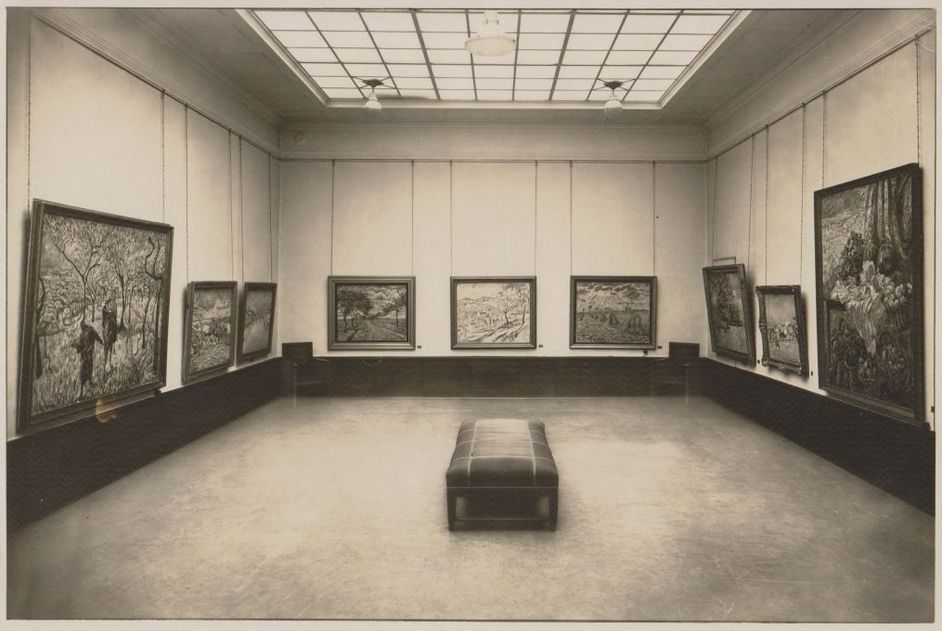
Galerie Ferdinand Möller, Installationsansicht, Repro: Berlinische Galerie
He worked in Berlin between 1918 and 1949, exhibiting Expressionist works as well as those of the Bauhaus artists. As a non-Jewish gallerist Möller was able to continue his business after the Nazis’ seizure of power and presented exhibitions featuring the works of Lyonel Feininger, Emil Nolde, or Oskar Schlemmer through 1937. After 1933, as one of last remaining modern art specialists in Berlin, Möller not only became an important contact for Jewish art collectors who had been pressured by the Nazis to give up their art collections, but he also became a “dealer” for so-called “Degenerate Art” that had been seized in German museums. Following a decree by the Reich Ministry for Popular Enlightenment and Propaganda, art dealers were allowed to sell works of art confiscated in 1937 to foreign countries only. However, Möller sold these works of art to collectors in Germany through 1943, when his gallery was hit by bombs during the war. Möller contributed to the preservation of the market for German Modernism though the end of the Second World War. In 1946, he was also among the first to raise public awareness of Nazi-defamed works of art.
In 1984, Angelika Fessler-Möller (1919 – 2002), the youngest daughter of Ferdinand Möller and a gallerist herself, donated to the Berlinische Galerie several thousand business letters, exhibition catalogues, and further documents from her father’s gallery. In 2013, this holding was supplemented by a donation from the Ferdinand-Möller-Stiftung (Ferdinand Möller Foundation), which Angelika Fessler-Möller established in 1995 together with the art dealer Wolfgang Wittrock (*1947).
In 2006, the Berlinische Galerie began its scholarly evaluation of the estate, funded through the initiative of the Ferdinand-Möller-Stiftung. The artworks referenced in the correspondence of the Galerie Ferdinand Möller through 1949 were compiled into a database to support provenance research in accordance with the “Washington Principles” and “Common Declaration”. Between 2009 and 2012, the scholarly evaluation was supported by the “Center for Provenance Research and Investigation” at the Institute for Museum Research. Thereafter, the Federal State of Berlin funded the digitization of the photos received from the estate in 2013. The archived works of art as well as their references in the correspondence are now available online and will be successively updated and revised.
Contact
Dr. Wolfgang Schöddert
Provenance Research
Phone +49 030-789 02 826
schoeddert@berlinischegalerie.de